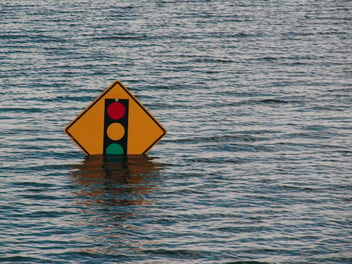Free Disaster Response Toolkit
The prevalence of natural disasters, in addition to the potential for other civil hazards, has necessitated a common framework for assessing a community’s risk, vulnerability, and preparedness should an incident occur. The Hazard Vulnerability Analysis provides a framework for organizations to better identify hazards, prepare for emergencies, and mitigate the impact of disaster.
What is a Hazard Vulnerability Analysis (HVA)?
The U.S. Department of Health and Human Services’ Hazard Vulnerability Analysis definition refers to the process of “identifying risks that are most likely to have an impact on a healthcare facility and the surrounding community.” The goal of the risk assessment is to inform organizations–like hospitals or emergency management entities–of the greatest risks they face and areas of vulnerability in the event of natural disaster or other civil hazards. A thorough HVA should guide organizations toward the areas of greatest risk so that they can subsequently focus attention and resources on risk mitigation efforts.
According to the Federal Emergency Management Agency (FEMA), there are basic components of a risk assessment:
- hazard identification
- profiling of hazard events
- inventory of assets
- estimation of potential human and economic losses based on the exposure and vulnerability of people, buildings, and infrastructure.
This process generally requires a collaborative effort between community partners. An organization’s HVA results should be communicated to emergency response agencies.
Download the free disaster response toolkit
Note: You may find the terms “Hazard Vulnerability Analysis” and “Hazard Vulnerability Assessment” used interchangeably.
Why Should Organizations Conduct a Hazard Identification and Risk Assessment?
Conducting a hazard identification and risk assessment is one of the first steps an organization must take in the emergency planning process. Determining areas of vulnerability is critical to any emergency and disaster preparedness plan. While avoiding hazards entirely may be impossible, a proactive approach to disaster management will help reduce the degree of impact and mitigate further damage. Responsible organizations should develop a thorough understanding of potential risks and resources required prior to a disaster, resulting in an effective, efficient response.
Who needs to complete an HVA?
All hospitals in the United States are required to conduct an HVA. However, it’s not just hospitals that can assess vulnerability to environmental and civil risks. Many emergency management organizations and other public service entities benefit from conducting a hazard risk assessment. Note that non-healthcare organizations may refer to this process as a Threat and Hazard Identification and Risk Assessment (THIRA). Businesses may conduct an assessment to identify assets at risk and to determine the potential operational and financial impact resulting from a disaster. Regardless of the size and reach of an organization, having a plan in case of emergency is not only responsible but potentially life-saving.
What are some examples of disaster and emergency hazards?
As part of the HVA process, you’ll need to assess the likelihood of possible hazards. The following examples were extracted from Ready.gov, a federal website for disaster preparedness information. While many of the hazards may seem unlikely, it’s important to take an all-hazards approach when developing a disaster management plan:
Natural hazards
- Meteorological: Hurricane, Flooding, Tornado, Winter Storm
- Geological: Earthquake, Tsunami, Volcano
- Biological: Pandemic Disease, Illness
Technological hazards
- Information Technology: Lost Data, Loss of Connectivity, Hardware Failure
- Utility Outage: Communications, Electrical Power, Water, Gas
- Fire/Explosion: Fire (Structure, Wildland), Explosion (Chemical, Gas)
- Hazardous Materials: Radiological Accident, Hazardous Material Spill, Off-Site Incident
- Chain Interruption: Supplier Failure, Transportation Interruption
Human-caused hazards
- Accidents: Transportation, Workplace, Rescue, Structural, Mechanical
- Intentional Acts: Labor Strike, Workplace Violence, Cyber Attack, Active Shooter and Other Acts of Terrorism
Download your FREE disaster response toolkit >>
What Is the Role of Volunteers In the Hazard Risk Assessment Process?
An HVA should inform communities on preparedness and prioritize its resources. Therefore, the HVA or THIRA processes should initiate community-wide involvement. Community members and stakeholders have a range of expertise and resources, and can be called upon to contribute input and perspectives. Community entities may include:
- College/universities and other research organizations
- Emergency management agencies and Emergency Planning Committees
- Hazard mitigation offices
- Fire, police, emergency medical services, and health departments
- Volunteer Organizations Active in Disasters (VOAD)
- Tribal governments
- Independent SMEs and contractors
Read more about the role of volunteers in disaster management.
When Should an Organization Perform a Hazard Vulnerability Analysis?
For a disaster management plan to be effective, an HVA must be conducted before disaster strikes. If your community has already faced disaster or hazards, it’s never too late to safeguard your organization. The impacts that may have already been experienced can help further inform areas of vulnerability and resource allocation.
How Does an Organization Conduct a Hazard Vulnerability Analysis?
The United States’ National Preparedness Goal describes the process of preparing and responding to hazards, threats, and disaster. The five areas include:
- Prevention: Prevent, avoid, or stop imminent threats.
- Protection: Protect communities against disaster.
- Mitigation: Reduce loss of life and property by lessening the impact of future disasters.
- Response: Respond quickly to save lives and meet basic human needs in the aftermath of an incident.
- Recovery: Recover following an incident with prompt restoration, strengthening, and revitalization of infrastructure, housing, health, economy, and social structure of communities.
Risk assessment methods like HVA or THIRA help organizations and communities to establish robust prevention, protection, and mitigation processes that occur prior to a disaster. Further, the hazard analysis seeks to identify risks that challenge an organization’s capabilities. These capability gaps can hinder a community’s ability to prevent, protect against, mitigate, respond to, and recover from a threat or hazard. The following hazard vulnerability analysis template is a federally-recognized process.
FEMA offers a comprehensive Hazard Vulnerability Analysis Worksheet. This hazard and vulnerability assessment tool can help communities identify risks, address capability gaps, and evaluate preparedness:
- Identifying and Assessing Risks:
- Action: Identify threats and hazards of concern and describe their impact.
- Key strategic questions: What do we need to prepare for? What level of capability do we need to be prepared?
- Estimating Capability Requirements:
- Action: Develop capability targets, assess current capabilities, and identify capability gaps.
- Key strategic questions: What are our current capabilities? What gaps exist between the capabilities we need and the capabilities we have?
- Building and Sustaining Capabilities:
- Action: Prioritize investments in areas that addressed identified capability gaps and sustainment needs.
- Key strategic questions:How can we address our capability gaps? What resources do we have available to address capability gaps?
- Planning to Deliver Capabilities:
- Action: Develop and update plans based on capability targets and gaps.
- Key strategic questions: Does our current plan reflect gaps findings? Does our current resource allocation system prioritize capability gaps?
- Validating Capabilities:
- Action: Use capability targets when assessing performance in real-world incidents and as evaluation criteria in exercises.
- Key strategic questions: What incidents have occurred that demonstrate gaps in our capability targets? How does this inform improvement? What incidents have occurred where capability targets have been met? What systems were in place that led to effective mitigation?
- Reviewing and Updating:
- Action: Use evaluation results to drive continuous improvement and update the THIRA.
- Key strategic questions: According to our assessment of gaps in capability, where does our preparedness plan need improvement? According to our risk analysis and performance review, what processes need changing?
FEMA’s hazard vulnerability analysis tool is for a variety of organizations and communities. Additionally, there are numerous other detailed hazard vulnerability assessment tools, most of which exist online. Kaiser Permanente, for example, has developed a hazard vulnerability assessment tool to guide hospitals and other healthcare entities toward a systematic method of assessment and to inform their disaster preparedness efforts and emergency planning.


Join 20,000+ Volunteer Leaders
Get impact-boosting articles, guides, and webinar invites to help grow your volunteer program
Conclusions about Hazard Vulnerability Analysis
The key to reducing the impact of emergencies and disasters is taking the necessary steps to ensure preparedness. If you are a community organization active in disaster response–and you rely on volunteers–it’s imperative to have a comprehensive volunteer mobilization plan in the event of a disaster. A disaster management software like ReDI can help you prepare your volunteer base for disaster, respond to emergencies promptly, and communicate with community partners in the most vital of moments.





